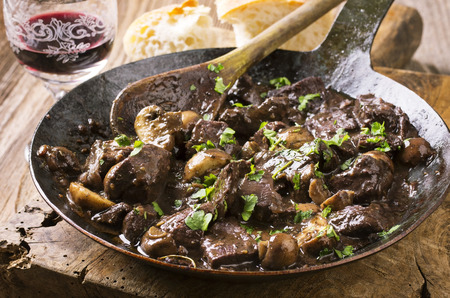One of the best parts of hunting whitetail deer is being able to enjoy the venison afterward. Deer are not raised on a ranch somewhere, pumped full of antibiotics and hormones like some of the meats you find in your local grocery store. They are free-ranging herbivores that consume natural plants, grass, berries, acorns, and nuts. As such, their meat is lower in fat and cholesterol than other types of meat and has more vitamins and omega-3 fatty acids. It’s also extremely delicious—if you manage to prepare it right.
Prepare venison like a pro with these tips:
Start in the field
For starters, a clean kill shot is the way to go. Not only do you want to keep the animal from prolonged suffering, the stress and adrenaline a wounded deer feels can be reflected in the flavor of its meat. As soon as it’s officially down, make quick work of removing the organs and entrails to stave off the decomposition process. Get the meat cooling ASAP, and once in the processing stage, be sure to remove anything that’s not muscle to ensure the best chance at a tender cut of meat.

Age the meat
Aging venison is the key to getting tender meat with good texture. Not taking your meat to a processing facility? No problem; you can easily age the meat yourself at home. If you choose to dry age, remember that proper ventilation and a consistent temperature of 34-37 degrees is vital. A simple way to achieve this could be to purchase a large plastic bin, poke holes through the side, and lay your butchered meat inside on a cooling rack. This way the blood can freely drip to the bottom of the container and stay separated from the venison. Allow the meat to sit like this in a refrigerator for up to 14 days, emptying the blood out every few days.
If you need a quicker age on the meat, leaving it in a cooler after removal from the bone and covering it in salt and ice will do the trick. Once the ice has melted (usually 24 hours later) drain the bloody mix off the meat and re-salt/ice again. This process usually takes about 48-72 hours. The aging time under refrigeration can be lessened to 3–7 days.
Tenderize for maximum flavor
There are quite a few ways to tenderize venison meat. Some of the more popular options include creating a simple dry rub, brining, or marinating the tougher cuts to ensure juicy, flavorful meat every time. Regardless of which one of these methods you choose to go with, kosher salt is always a good spice to add to the mix. Its properties are known to break down protein and improve the texture of venison by breaking down fibers and connective tissue in the muscles. A meat mallet is also capable of this, so having one on hand in the kitchen is a definite advantage.
Remember, venison is not beef
Here’s where people often make their biggest mistake. You can prep the meat to the best of your ability, but if you approach the cooking stage incorrectly it can all be for nothing. Do not treat your cuts of venison like you would a cut of beef. Unlike cattle, which is typically raised on a ranch with a corn-fed diet, whitetail deer spend their lives roaming freely and foraging on natural plants. Because of this, their meat is much leaner and does not have the same cook time as beef.
Hunting whitetail deer is so much more than just a means to an adrenaline rush. If you’re lucky enough to bag a buck and harvest its meat, there nothing better than being able to feed your family with it. Especially when you know it’s one of the healthiest options available and has zero percent of those fillers you find at your average butcher counter.
If that doesn’t get you amped up for the hunting season, we don’t know what will. So what are you waiting for? Grab your Recon Outdoors hunting gear and head to the woods!


